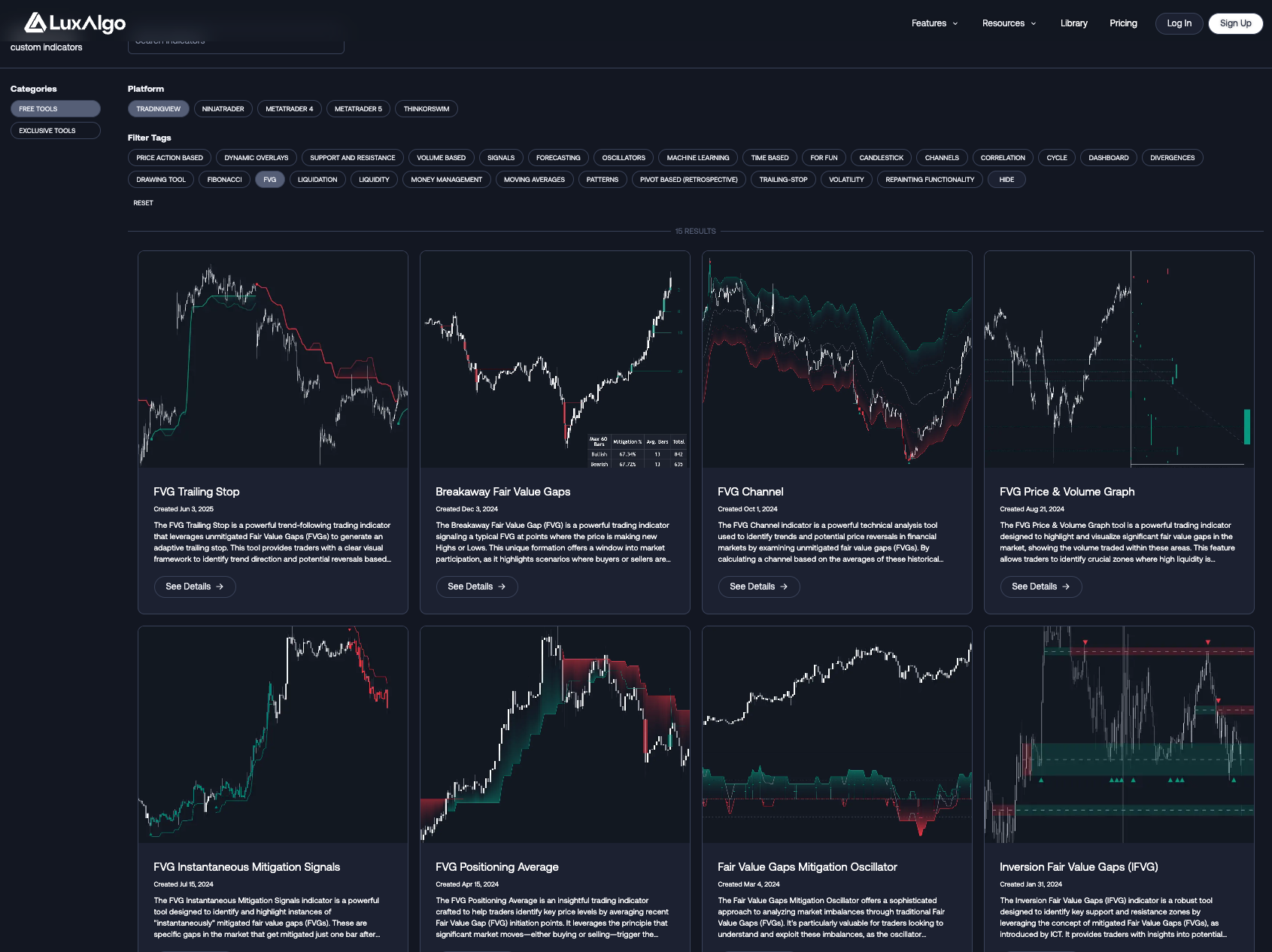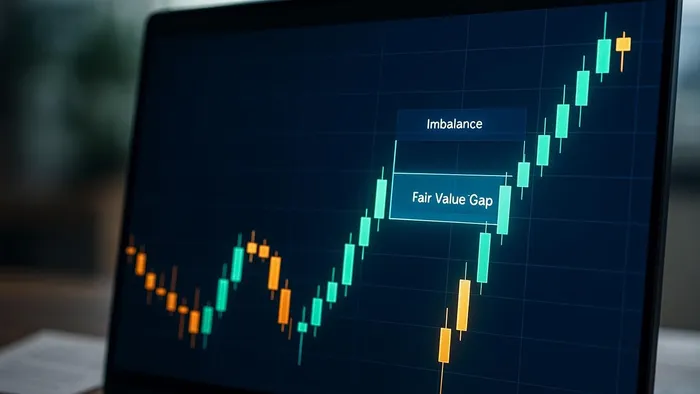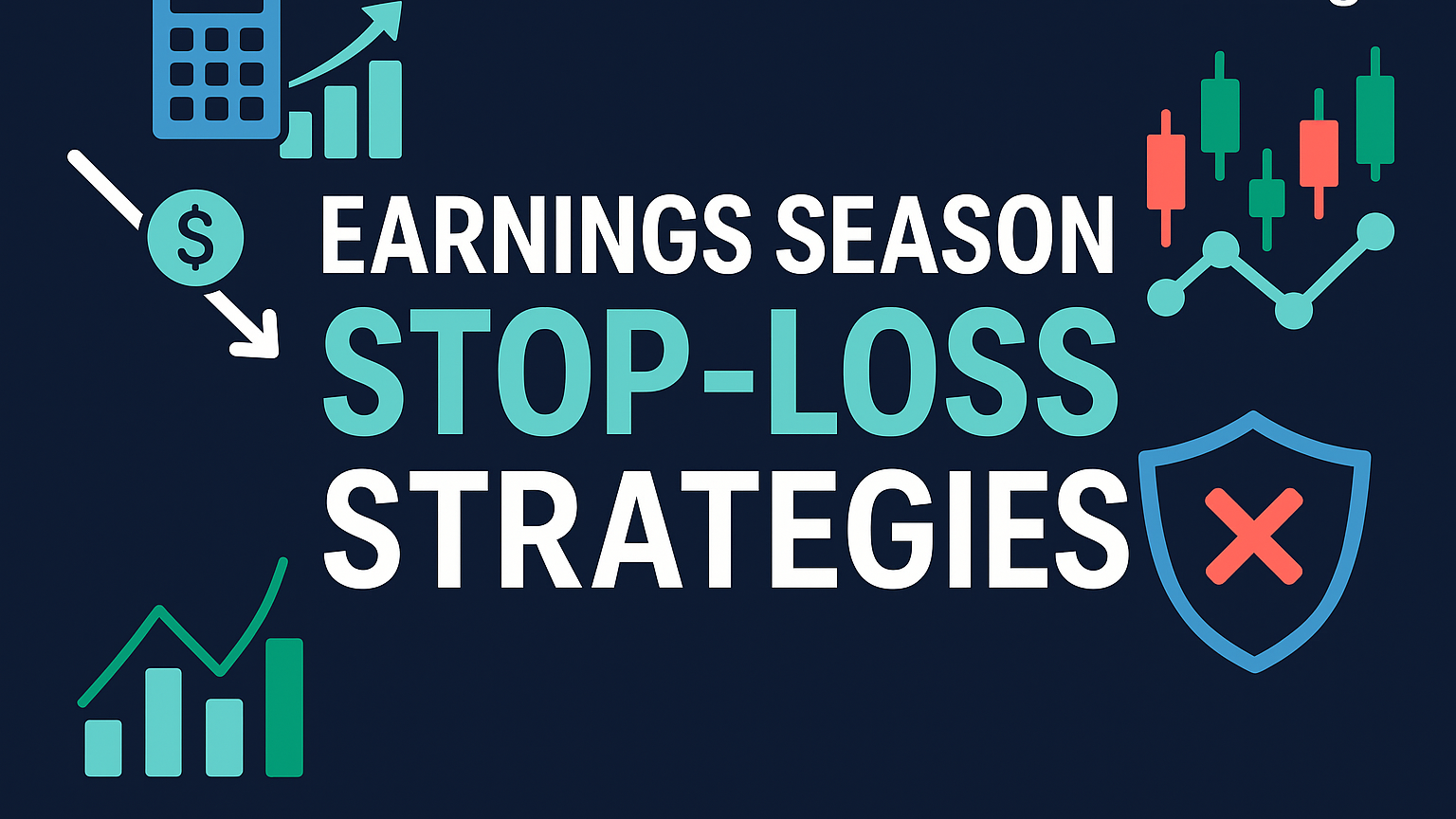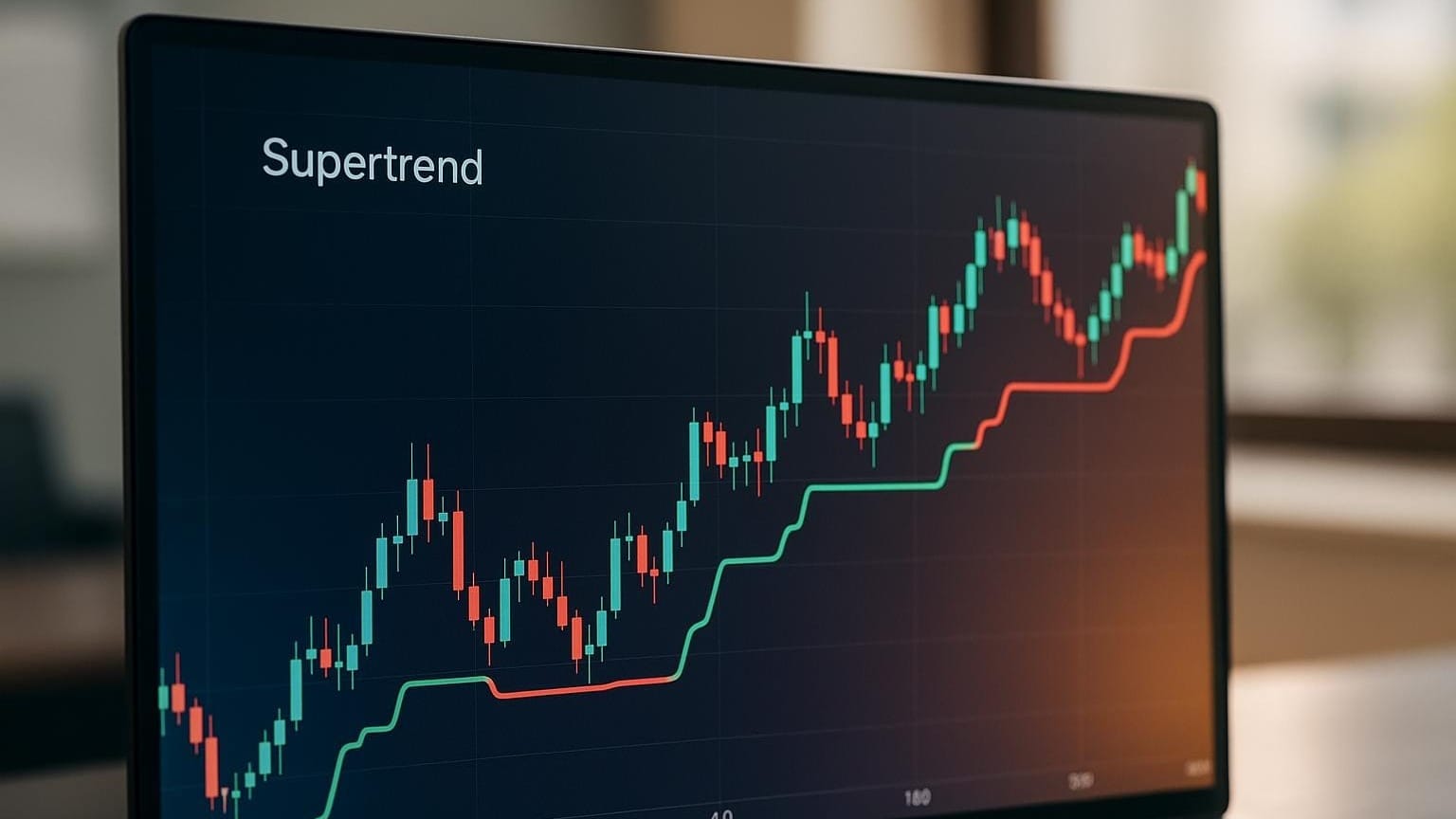Learn how to leverage Fair Value Gaps in trading to identify market inefficiencies and optimize your entry and exit strategies.
Fair Value Gaps (FVGs) are untraded price gaps caused by rapid market movements, and they offer traders opportunities to identify potential price reversals or continuations. Here’s what you’ll learn:
- What Are FVGs? Gaps in price charts due to market inefficiencies.
- Why Do They Matter? Prices revisit these gaps 70–80 percent of the time.
- How to Spot Them: Look for a 3-candle pattern with clear gaps.
- Trading Strategy: Use FVGs to find entry and exit points, confirm trends, and manage risk.
Quick Tip: Combine FVG analysis with tools like volume patterns and trend lines for better accuracy, and always practise strict risk management.
How to Trade Fair Value Gaps (Full Tutorial)
Finding Fair Value Gaps on Charts
Spotting Fair Value Gaps (FVGs) involves recognising specific chart patterns and using technical tools to simplify the process. Let’s dive into the patterns that define FVGs and the tools that can help you identify them.
What FVGs Look Like
FVGs follow a clear three-candle pattern that indicates inefficiencies in the market. Here’s how to identify them:
- Look for a large green candle where the high of the left candle does not overlap the low of the right candle.
- Confirm that the current low is higher than the high from two bars earlier.
Bearish FVG Pattern:
- Spot a large red candle where the low of the left candle does not overlap the high of the right candle.
- Ensure the current high is lower than the low from two bars earlier.
A crucial detail: the wicks of the outer candles should remain separate from the body of the middle candle.
Once you’ve identified these patterns, you can use specialised tools to make the process even easier.
Tools for FVG Detection
Using the right tools can save time and improve accuracy when identifying FVGs. The LuxAlgo Price Action Concepts (PAC) toolkit on TradingView is a popular choice for this purpose, offering features to identify and analyse market imbalances:
- Basic FVG Detection
Automatically highlights standard FVGs, reducing the need for manual analysis. - Advanced FVG Analysis
The toolkit can identify various FVG types, including:- Standard FVGs
- Inverse FVGs, which may suggest retest zones
- Double FVGs, which highlight overlapping gaps and balanced price ranges
- Volume Integration
The FVG Price & Volume Graph adds context by showing:- Volume traded during the gap’s formation
- Potential support and resistance levels
- High-liquidity areas that contributed to the gap
The volatility-threshold feature also allows you to filter out smaller, less impactful imbalances.
Automated FVG Detection with LuxAlgo Price Action Concepts
The Fair Value Gap feature inside the LuxAlgo Price Action Concepts toolkit automates the entire FVG-spotting workflow. It instantly highlights gaps, labels their type, and overlays volume data so you can confirm imbalance strength in seconds. Traders who want to add this feature to their charts can get access by creating an account at LuxAlgo.com and subscribing to either the Premium or Ultimate plan.

To dive deeper into how PAC handles imbalances, order blocks, and other price-action concepts, check out these guides:
Free Fair Value Gap Tools from the LuxAlgo Library
If you prefer to experiment with FVG analysis before subscribing, the LuxAlgo Library provides hundreds of free indicators, including community-favourite Fair Value Gap scripts. Simply create a free account and unlock these tools on TradingView and other supported charting platforms.

These free indicators let you explore FVG concepts, test strategies, and decide whether advanced features in the PAC toolkit suit your workflow.
Trading with Fair Value Gaps
Once you've identified FVGs on your charts, here’s how to trade them step by step.
1. Spot the Gap
After using the earlier methods to locate FVGs, shift your focus to executing trades:
- Confirm the trend: FVGs tend to perform better in strong market trends.
- Check multiple timeframes: This helps align your strategy and pinpoint precise entries.
- Prioritise reliable formations: Look for well-defined FVG setups.
2. Monitor Price Return
Wait for the price to revisit the gap before resuming its original direction.
"A fair value gap is especially popular among price-action traders and occurs when there are inefficiencies or imbalances in the market, or when the buying and selling are not equal. Fair value gaps can become a magnet for the price before continuing in the same direction."
Watch how the price behaves near the gap. This area often acts as support or resistance. Once the gap is retested, you can proceed with your trade.
3. Place Your Trade
Use the table below as a guide for trading bullish or bearish FVGs:
| Trade Component | Bullish FVG | Bearish FVG |
|---|---|---|
| Entry Trigger | Price retraces to gap support | Price retraces to gap resistance |
| Stop-Loss Placement | Below the FVG’s lower boundary | Above the FVG’s upper boundary |
| Initial Target | Previous swing high | Previous swing low |
| Trading Session | ICT Kill Zones | ICT Kill Zones |
Example: Consider a Bitcoin CFD trade. When the price surged from $62 000 to $68 000, it left a gap. Traders watched for a retracement to about $64 000 before entering long positions. Stop-loss orders were commonly placed near $63 000.
Key Trade Management Tips
- Use trend lines or moving averages to confirm trade direction.
- Validate the gaps with volume patterns.
- Combine FVGs with other technical tools for stronger setups.
- Gradually take profits from winning trades.
- Adjust your stop-loss to breakeven as momentum builds.
Avoid trading FVGs in sideways or choppy markets, and stick to strict risk management to protect your capital.
Benefits and Limitations
FVG Trading Strengths
FVG trading offers well-defined entry points. When paired with market analysis, these gaps highlight areas likely to be revisited. This approach also allows traders to set clear risk limits by placing stop-loss orders based on the gap’s boundaries.
Fair value gaps often emerge from sharp price movements caused by large orders. This method is applicable across various markets, including Forex, stock indices, commodities, cryptocurrencies, and equities.
FVG Trading Challenges
Understanding the hurdles of FVG trading can help improve your strategy.
| Challenge | Impact | Mitigation Strategy |
|---|---|---|
| Incomplete Gap Fills | Prices may not reach expected entry points | Use multiple-timeframe analysis |
| Market Volatility | Reduces gap reliability and fill likelihood | Combine with other technical tools |
| Limited FVG Occurrences | Fewer trading opportunities | Focus on quality setups across multiple assets |
| False Signals | Gaps may fail to cause a reversal | Set clear criteria for trade qualification |
Another major issue is market unpredictability. Even when fair value gaps are accurately identified, prices can continue moving through the gap without reversing, which may lead to losses.
Timing is also critical. Traders must balance waiting for validation of the gap against the risk of missing opportunities or falling for false breakouts. To address these challenges, a well-rounded strategy is key. This includes combining FVG analysis with other tools like order blocks, breaks of structure, shifts in market behaviour, and liquidity grabs. Evaluating trades within the context of higher timeframes can also improve accuracy and success rates.
FVG Trading Examples
Uptrend FVG Trade Setup
Let’s break down an uptrend FVG trade setup using a Bitcoin CFD as an example.
Bitcoin surged from $62 000 to $68 000, creating a noticeable gap. A retracement to about $64 000 offered a potential entry point.
- Entry: Go long at approximately $64 000.
- Stop-Loss: Place it at $63 000.
- Target: Set profit targets based on the size of the gap.
This example highlights how identifying FVGs can lead to actionable trades. The same principles can be applied to other trends and markets, not just uptrends.
FVG Trading Across Markets
The FVG strategy isn’t limited to one market. Here’s how it works across different types:
| Market Type | FVG Characteristics | Trading Considerations |
|---|---|---|
| Forex | Gaps occur often due to 24-hour trading | Watch high-volume sessions for stronger setups |
| Stocks | Gaps form around earnings reports | Focus on pre- and post-market price movements |
| Cryptocurrencies | High volatility creates frequent gaps | Use strict criteria to filter for quality setups |
To improve your trading outcomes across markets:
- Combine FVG analysis with key support and resistance levels.
- Look at trading volume within FVG zones to confirm setups.
- Use ATR (Average True Range) to adjust stop-loss levels in volatile conditions.
When trading FVGs in any market, focus on higher timeframes for more reliable signals. This helps reduce noise and zero in on stronger opportunities. Additionally, newer FVGs tend to offer better setups compared with older ones.
Conclusion
Main Points Summary
Fair Value Gaps (FVGs) can reveal market inefficiencies that traders might leverage for potential gains. Here are the key points for trading FVGs effectively:
Analysis Basics
- FVGs tend to work best in strong trends on higher timeframes, such as 4-hour, daily, or weekly charts.
Trading Approach
- Combine FVG analysis with other technical tools.
- Pay close attention to price movements when they revisit gap areas.
- Stick to strict risk-management practices.
"Think of Fair Value Gaps as one tool in your trading toolkit, not the whole workshop. They work best when combined with other technical-analysis tools like support and resistance levels, trend analysis, and volume patterns," The Chart Guys
These principles provide a solid foundation for incorporating FVG strategies into your trading plan.
Getting Started
If you're ready to explore FVG trading, here’s how to approach it:
| Phase | Action Steps | Key Considerations |
|---|---|---|
| Learning | Study chart patterns and FVG setups | Focus on identifying three-candle FVGs |
| Practice | Start with paper trading | Test and refine your strategy |
| Implementation | Trade with small positions | Follow strict risk-management guidelines |
| Refinement | Review and analyse results | Adapt based on performance insights |
FVGs are just one part of a larger trading strategy. With 77 percent of retail-investor accounts losing money when trading CFDs, it’s critical to prioritise education and risk control.
Begin by identifying FVGs on historical charts, look for clear examples where price action fills gaps, and take notes on these occurrences. Gradually integrate FVG analysis into your trading routine, ensuring you stay disciplined and manage risk carefully.
FAQs
How can I combine Fair Value Gaps with other technical tools to improve my trading strategy?
To improve your trading strategy, you can combine Fair Value Gaps (FVGs) with other technical-analysis tools for a well-rounded approach. FVGs highlight market imbalances, often indicating potential entry or exit points. By pairing them with tools like trend analysis, support and resistance levels, or momentum indicators, you can refine your decision-making and identify high-probability setups.
For example, use FVGs to confirm areas of interest within a broader trend or to validate price reversals near key support or resistance zones. This layered approach helps you filter signals and make more informed trades. The key is to integrate FVGs into your existing strategy while focusing on consistency and risk management.
What are the common mistakes traders make with Fair Value Gaps, and how can I avoid them?
Traders often make mistakes when using Fair Value Gaps (FVGs), such as misinterpreting price movements, neglecting higher timeframes, relying too heavily on a single indicator, or failing to manage risk effectively. To avoid these pitfalls:
- Focus on significant price movements rather than minor fluctuations to identify meaningful opportunities.
- Use a top-down analysis approach by starting with higher timeframes to determine the overall trend before diving into lower timeframes for precise entries and exits.
- Combine multiple indicators, like momentum and volume, to confirm signals and avoid relying on just one tool.
- Practise strong risk management by setting stop-losses, sizing positions appropriately, and maintaining emotional discipline.
By prioritising high-probability setups and avoiding weak or unclear signals, you can make better trading decisions and improve your overall strategy.
What are Fair Value Gaps, and how can traders adapt their strategies for volatile markets like cryptocurrencies?
Fair Value Gaps (FVGs) are price imbalances that occur when there’s a significant difference between consecutive candlesticks, creating gaps in the market. These gaps can serve as key levels for identifying potential entry and exit points across various markets, including stocks, Forex, commodities, and cryptocurrencies.
In highly volatile markets like cryptocurrencies, FVGs are more frequent due to sharp price movements. While this presents opportunities, traders need to be cautious of false signals and prioritise thorough analysis. Filtering FVGs based on volume, trend direction, or timeframe can help improve accuracy and reduce risk in such dynamic environments.








